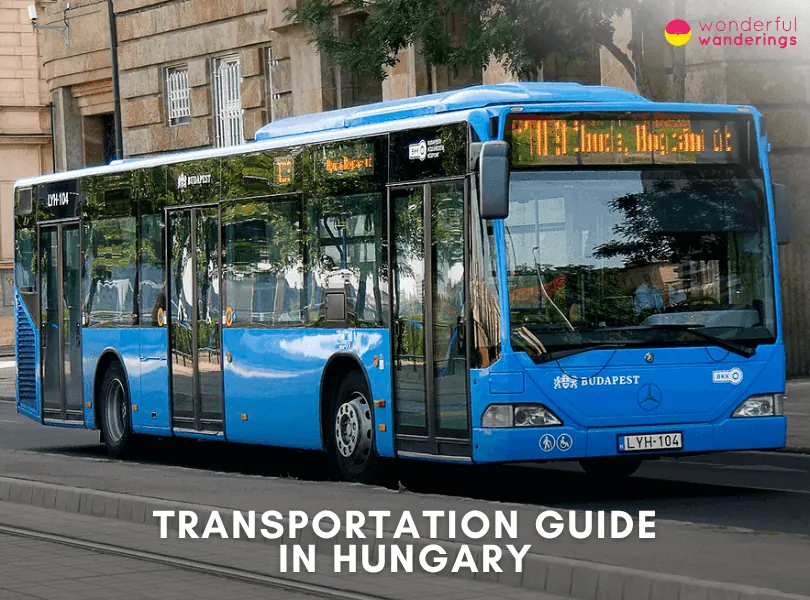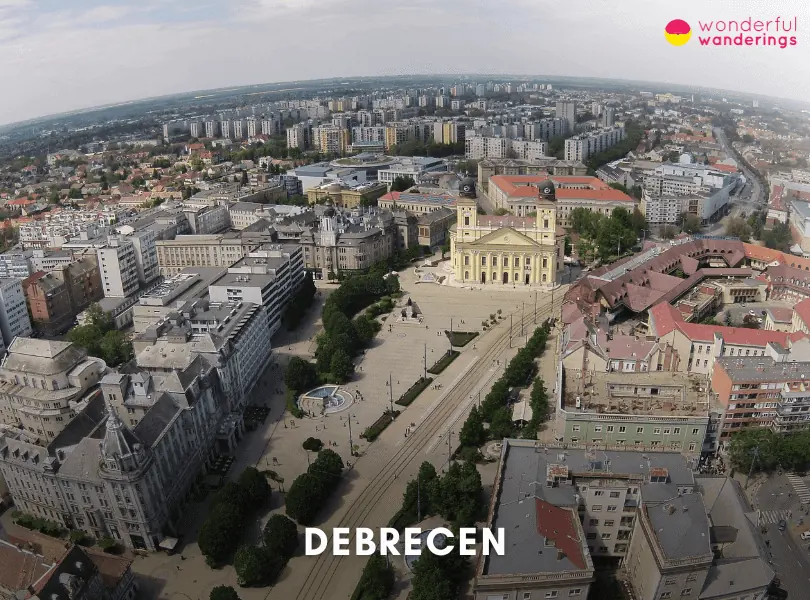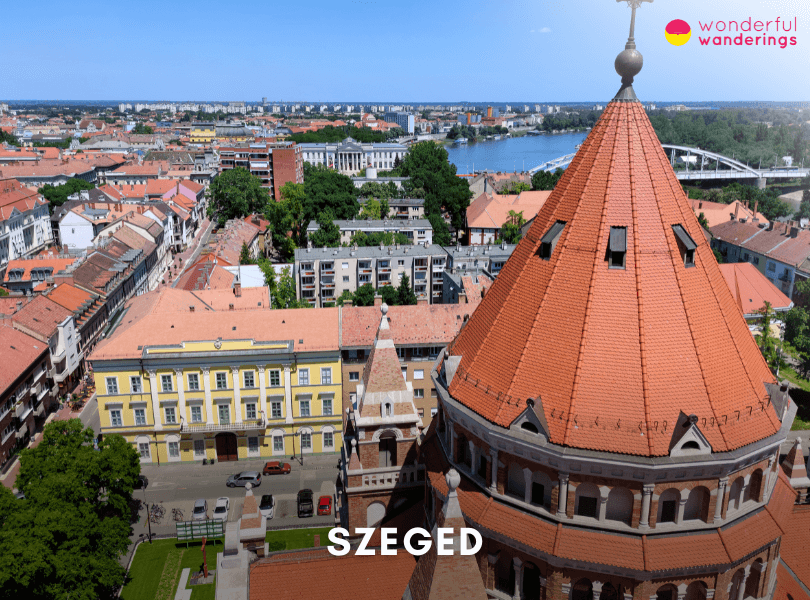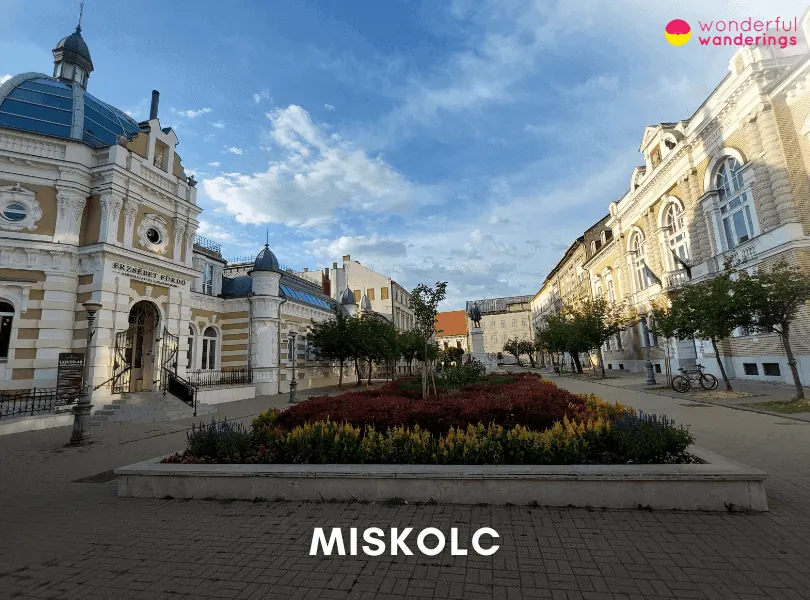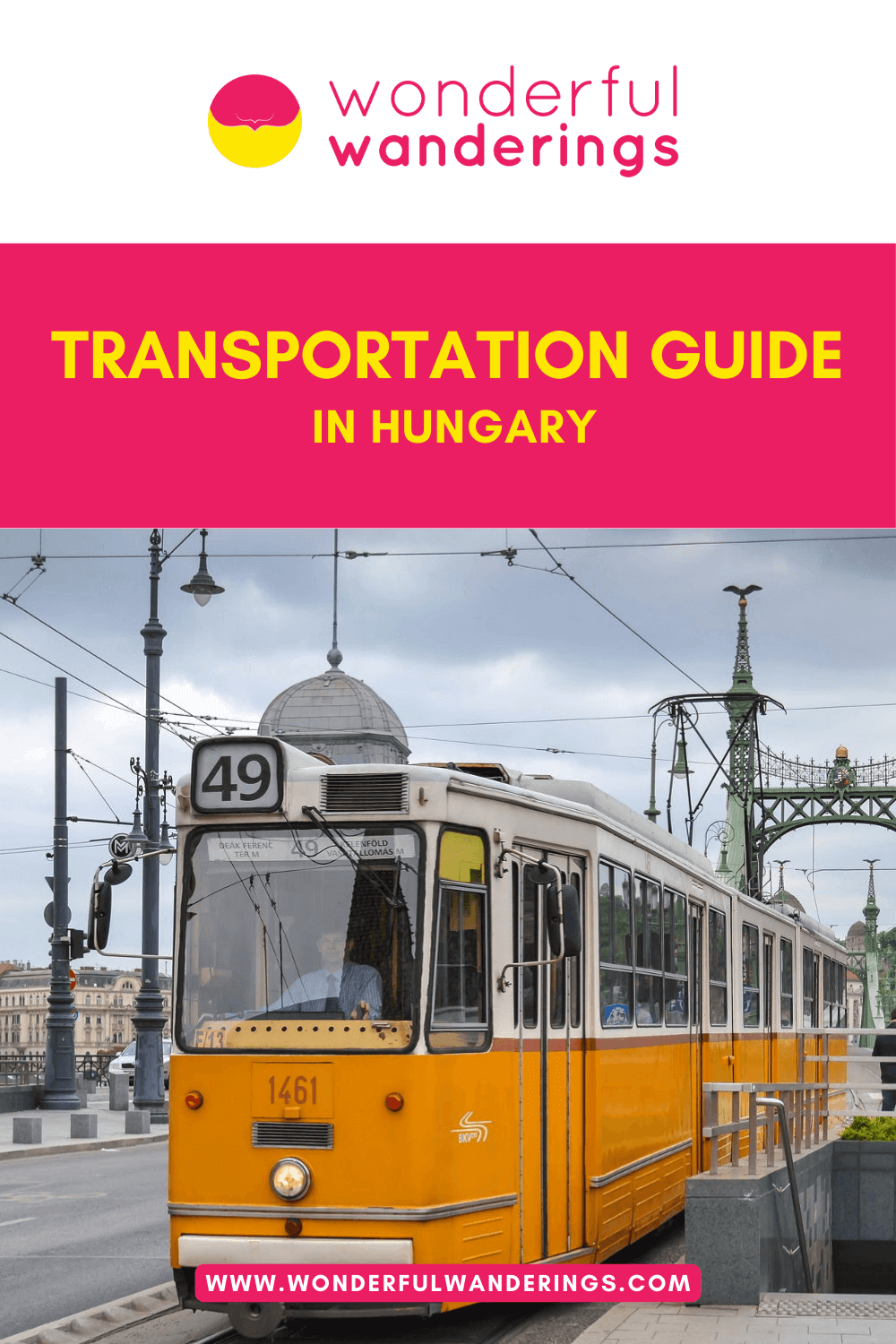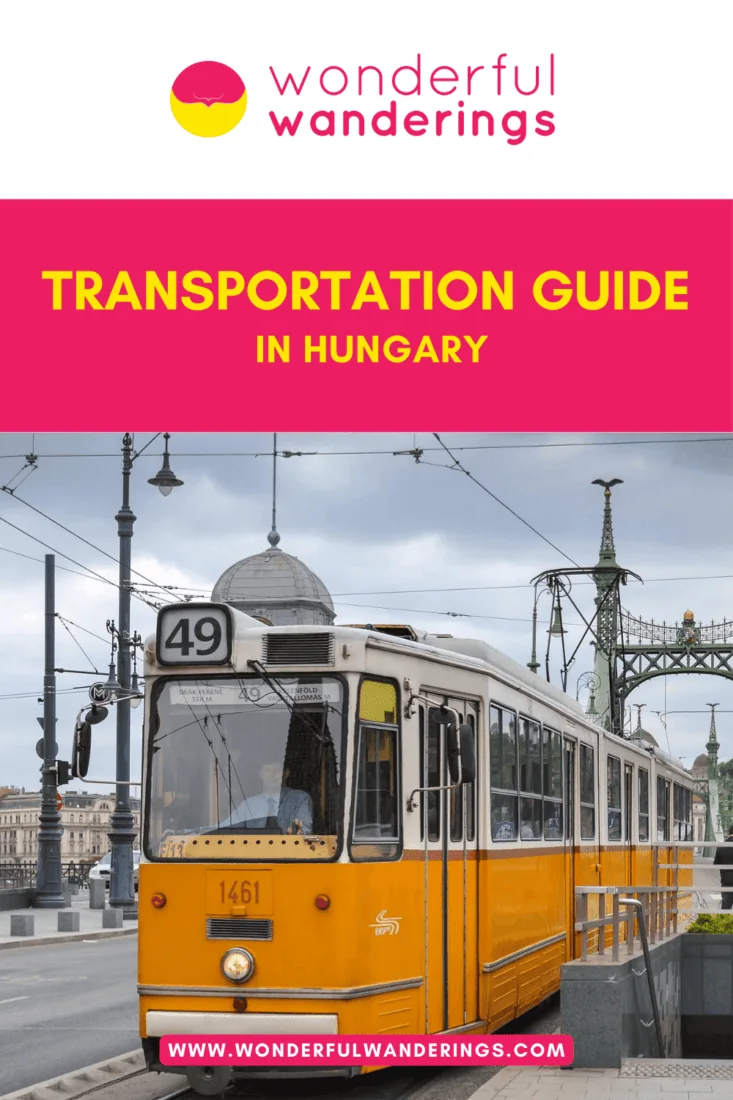Hungary is a landlocked country in Central Europe, famous for its rich history, culture and natural beauty. Traveling around Hungary is easy and affordable, as the country offers a variety of transportation options for different needs and preferences. The most common and convenient way to travel within Hungary is by train. The national railway company, MÁV, operates a network of fast and comfortable trains that connect major cities and towns across the country. Visitors can buy tickets online, at the station or on the train. The prices vary depending on the distance and the type of train, but they are generally cheaper than other modes of transport. A one-way ticket from Budapest to Debrecen, the second-largest city in Hungary, costs 23€ ($25.07, £20.01). The other option to travel around Hungary is by bus. The main bus company, Volánbusz, runs regular and frequent services to almost every destination in the country. Buses are usually slower than trains, but they can reach some places inaccessible by rail. They are also cheaper than trains, especially if booked in advance or using a discount card. A one-way ticket from Budapest to Eger, a historic town in northern Hungary, costs 10€ ($10.9, £8.7).
Where is Hungary Located?
Hungary is a landlocked country in Central Europe. It borders Slovakia, Ukraine, Romania, Serbia, Croatia, Slovenia and Austria. Hungary has a population of 9.7 million, mostly ethnic Hungarians and a significant Romani minority. Hungarian is the official language and Budapest is the country’s capital and largest city.
Hungary has a total area of 93,030 square kilometers (35,920 square miles), making it about the size of Portugal or the US state of Indiana. Hungary has three major geographic regions. the Great Alföld, a flat plain east of the Danube River; Transdanubia, a hilly region west of the Danube and extending to the Austrian foothills of the Alps; and the North Hungarian Mountains, a mountainous and hilly area beyond the northern boundary of the Great Alföld. The highest point in Hungary is Kékes, at 1,014 meters (3,327 feet) above sea level, in the Mátra Mountains northeast of Budapest.
Hungary has an efficient public transport network, including buses, trams, trolleybuses, metro services in all cities and suburban railway lines and boat services in Budapest. Passes are available for various lengths of time and are valid for each form of transport. Hungary also has a well-developed rail system with international, domestic and commuter trains. The main railway stations in Budapest are the Eastern (Keleti), Western (Nyugati) and Southern (Déli). Hungary has 1,481 kilometers (920 miles) of motorways and expressways, connecting many major cities to the capital and neighboring countries.
How to Get to Hungary?
There are 4 main ways to get to Hungary. Firstly, one can opt for air travel to Hungary. Various international airlines provide direct flights to Budapest, Hungary’s capital city. Travelers can book tickets to Budapest Ferenc Liszt International Airport, which is well-connected with major cities worldwide. The airport offers convenient facilities and services for arriving passengers. Secondly, another option is to travel by train. Hungary has an extensive railway network, making train travel a reliable choice. Travelers can board trains from neighboring countries or major European cities to reach various destinations within Hungary. The trains offer comfortable seating and the railway system ensures efficient connectivity throughout the country. Thirdly, buses are a convenient option for those who prefer road travel. Hungary has a well-developed bus network with both domestic and international routes. Travelers can board buses from different European cities within Hungary to reach their desired destinations. Bus journeys often provide an affordable and flexible mode of transportation. Lastly, traveling by boat is also possible for certain regions of Hungary. The country is home to the Danube River, which flows through Budapest and other cities. River cruises and ferry services are available for tourists who wish to explore Hungary’s scenic waterways. It can be a unique and enjoyable way to experience the country’s natural beauty.
How Many Airports are there in Hungary?
Hungary has 6 airports with scheduled flights. Budapest Ferenc Liszt International Airport is the biggest and busiest airport serving the capital city and the surrounding region. It offers flights to 124 destinations in 41 countries. In 2023, it handled over 16 million passengers. The second largest airport is Debrecen International Airport, located in the country’s eastern part. It mainly serves low-cost carriers such as Wizz Air, which is based in Hungary. It has flights to 18 destinations in 12 countries. In 2023, it handled about 600,000 passengers. The other four airports are Hévíz-Balaton Airport, Győr-Pér International Airport, Pécs-Pogány International Airport and Fertőszentmiklós Airport. They are smaller and have fewer flights, mostly to nearby European countries. They serve mainly regional and charter traffic, general aviation and tourism.
What Type of Transportation can you Choose To get Around Hungary from the Airport?
Listed below are the types of transportation that visitors can choose to get around Hungary from the Airport.
- Taxis. Taxis are readily available at Budapest Ferenc Liszt International Airport, allowing travelers to reach their destinations conveniently and directly. They provide a comfortable and efficient mode of transportation within Hungary.
- Airport Shuttle Services. Airport shuttle services are available for transportation from the airport to various locations within Hungary. These services offer shared rides, making them a cost-effective option for travelers. They operate on fixed schedules and provide door-to-door service, ensuring convenience and ease of travel.
- Public Transportation (Bus). Hungary has a well-developed public transportation system, including buses that connect the airport with different parts of the country. Travelers can use public buses for affordable transportation to their desired destinations. Bus stops are conveniently located at the airport and the routes cover various areas within Hungary.
- Car Rental. Renting a car is a popular option for travelers who want flexibility and independence in exploring Hungary. Several car rental companies have counters at the airport, allowing visitors to rent a vehicle upon arrival easily. Renting a car in Hungary allows one to travel at one’s own pace and explore popular tourist destinations and off-the-beaten-path locations.
- Airport Rail Link. Budapest Ferenc Liszt International Airport is connected to the city’s railway network through the Airport Rail Link. This convenient transportation option allows travelers to reach various parts of Hungary by train. The rail link provides a quick and efficient way to access different destinations, especially for those who prefer train travel.
Why Riding a Bus in Hungary is Economical and Environmentally Friendly?
There are 4 main reasons why riding a bus in Hungary is economical and environmentally friendly. Firstly, buses in Hungary offer affordable fares compared to other modes of transportation. Bus tickets are typically priced lower than train or plane tickets, making them a cost-effective option for travelers, especially those on a budget. Secondly, buses provide a reliable and extensive network that covers various regions and cities across Hungary. The country has a well-developed bus infrastructure, ensuring connectivity even to remote areas. Thirdly, choosing to ride a bus in Hungary contributes to environmental sustainability. Buses are considered a more eco-friendly mode of transportation compared to private cars. Individuals can reduce their carbon footprint by minimizing the number of vehicles on the road by opting for bus travel. Lastly, buses in Hungary are equipped with modern technologies and amenities that enhance the overall travel experience. Many buses are air-conditioned, providing a comfortable journey, particularly during hot summers. Busses often have free Wi-Fi onboard, allowing passengers to stay connected and maximize travel time.
Why You Should Consider Taxi Rides for Short Trips in Hungary?
Visitors should consider taxi rides for short trips in Hungary due to their time efficiency, convenience, comfort and privacy. Firstly, taxi rides offer a time-efficient mode of transportation for short distances. Taxis in Hungary are readily available and can be hailed from various locations, including airports, train stations and popular tourist spots. Secondly, taxi rides provide a direct and hassle-free way to navigate Hungary’s cities. Taxis offer door-to-door service, allowing visitors to be dropped off and picked up at their desired locations. This is particularly beneficial when traveling with luggage or for individuals with mobility limitations. Taxis also offer the flexibility to take alternative routes, avoiding heavy traffic or road closures, which can help save time during short trips. Thirdly, taxis provide a comfortable and private travel experience. Most taxis in Hungary have air conditioning, ensuring a pleasant journey, especially during hot summers. Visitors can enjoy a relaxing ride in the comfort of a taxi without the need to navigate public transportation or carry heavy bags. Lastly, although taxi fares may be higher than other modes of transportation, they are still relatively affordable for short trips within Hungary. Taxis in Hungary generally operate on a metered system, ensuring transparent pricing. Visitors can have peace of mind knowing the approximate cost of their journey before starting the ride. A taxi ride’s convenience and time-saving aspects often outweigh the slightly higher cost for short distances.
Why Rental Cars are the Best Option to Go Around Hungary, Especially for the Family?
Rental cars are the best option to go around Hungary, especially for the family, due to their flexibility, comfort, convenience and access. Firstly, rental cars offer flexibility and convenience, allowing families to explore Hungary at their own pace and schedule. Families can choose their destinations, make spontaneous stops and take scenic routes. This flexibility is particularly beneficial for families with young children or elderly members who may have specific needs or preferences during their travels. Secondly, rental cars provide ample space and comfort for families. Most rental cars offer spacious interiors with enough room to comfortably accommodate passengers and their luggage. This ensures a comfortable and enjoyable journey, especially during long drives. Thirdly, rental cars offer convenience when it comes to traveling with children. Families can easily install car seats or booster seats in rental cars, ensuring the safety and comfort of young passengers. A rental car also eliminates the need to carry strollers, diaper bags or other bulky items while using public transportation. Families can conveniently store all their belongings in the car, making it easily accessible during their travels. Lastly, rental cars provide access to remote or less accessible destinations in Hungary. Public transportation may be limited in certain areas, but having a rental car allows families to venture off the beaten path and explore hidden gems or lesser-known attractions.
Why should you Try to Take the Ferry in Hungary?
There are 4 major reasons why visitors should try to take the ferry in Hungary. Firstly, ferries provide a unique and scenic way to explore Hungary’s waterways and connect different parts of the country. Hungary is home to beautiful rivers and lakes like the Danube River and Lake Balaton. Visitors can enjoy views of the water and the surrounding landscapes by taking the ferry. Secondly, ferry rides offer a relaxing and leisurely travel experience. Ferries provide a more laid-back atmosphere, unlike other modes of transportation, such as buses or trains. Visitors can sit back, unwind and enjoy the ride while taking in the scenery. Thirdly, ferries in Hungary often serve as a means of transportation to popular tourist destinations or attractions. Ferries operate on Lake Balaton, allowing visitors to reach different towns and villages along its shores. It allows one to explore charming lakeside towns, visit thermal spas or engage in water activities. Lastly, ferries in Hungary are often reasonably priced, making them an affordable option for visitors. The affordability makes ferry travel accessible to many visitors, including budget-conscious travelers and families.
Who would Consider a Bicycle as a Transporation to Go Around Hungary?
Individuals who value affordability, immersion in nature, flexibility and physical health would consider a bicycle a viable transportation option to go around Hungary. Firstly, bicycles offer a cost-effective mode of transportation for those on a budget. Renting or bringing a bicycle to Hungary eliminates the need for costly fuel or public transportation fares. Bicycles require minimal maintenance and have fewer associated expenses than a car or motorbike. Secondly, cycling in Hungary provides a unique and engaging way to experience the country’s landscapes and cultural heritage. Hungary offers diverse terrain, including flat plains, rolling hills and scenic countryside. Through cycling, individuals can intimately connect with their surroundings, enjoying the sights, sounds and scents of the places they pass through. Thirdly, bicycles offer flexibility and freedom to explore Hungary at one’s own pace. Cyclists can choose their routes, stop at points of interest and deviate from traditional tourist paths. Bicycles also provide the advantage of maneuvering through narrow streets or pedestrian-only areas, granting access to places that may be inaccessible to other modes of transportation. Lastly, cycling promotes physical health and well-being. Hungary’s favorable climate, with warm summers and mild winters, makes it conducive for cycling throughout the year. Riding a bicycle allows low-impact exercise while enjoying the fresh air and sunshine. It can be an enjoyable way to stay active and maintain fitness while exploring the country. Cycling contributes to reducing carbon emissions, making it an environmentally friendly choice for sustainable travel.
What are the Big Towns in Hungary?
The big towns in Hungary are Budapest, Debrecen, Szeged and Miskolc. Budapest, the capital city of Hungary, stands out as the largest and most prominent town in the country. Budapest is a metropolis that offers many opportunities for residents and visitors alike. It serves as Hungary’s political, economic and cultural hub, with numerous businesses, government institutions and cultural landmarks. Debrecen is the second-largest city and serves as the regional center for the Northern Great Plain region. Debrecen is known for its educational institutions, including the University of Debrecen, which attracts students from all over Hungary and abroad. Szeged is a major town in southern Hungary. It is known for its historical architecture, particularly in the city center, rebuilt in the Art Nouveau style after a devastating flood in the late 19th century. Miskolc is a large town located in northeastern Hungary. It is the country’s third-largest city and is an important industrial and commercial center for the region. The town is surrounded by beautiful natural landscapes, including the Bükk Mountains, offering outdoor activities and exploration opportunities.
1. Budapest
Budapest is the capital city of Hungary and the largest town in the country. It is in the central part of Hungary and is divided by the Danube River into two parts. Buda and Pest. Buda, located on the hilly western bank of the river, is known for its historical landmarks and scenic views. Pest, on the flat eastern bank, is the commercial and cultural center of the city. Budapest is a relatively large town. It covers an area of 525 square kilometers (203 square miles). The city’s urban area has a mix of residential neighborhoods, commercial districts and green spaces. Budapest’s population is around 1.7 million, making it the most populous town in Hungary.
Budapest has a well-developed transportation system offers various options for getting around the town. The city has an extensive network of buses, trams and metro lines that provide convenient and affordable transportation within the town. The metro system consists of four lines that connect different parts of the city, making it easy for residents and visitors to navigate. Taxis and ride-sharing services are readily available for those who prefer private transportation. Budapest Ferenc Liszt International Airport is the main airport serving the city. It is located 16 kilometers (10 miles) southeast of the city center. The distance from the airport to Budapest can be covered by various means of transportation. The most common options include taking a taxi, which takes 25 to 30 minutes and costs 30€ ($32.7, £26.1) to 40€ ($43.6, £34.8) or using public transportation, such as the airport bus or the airport shuttle, which takes 40 to 50 minutes and costs 2€ ($2.18, £1.74).
2. Debrecen
Debrecen is a major town located in the eastern part of Hungary. It serves as the regional center for the Northern Great Plain region. Debrecen is known for its educational institutions and cultural attractions. Debrecen is the second-largest town in Hungary, covering an area of 461 square kilometers (178 square miles). Its population is around 200,000, making it a significant urban center in the country.
Transportation options in Debrecen include a well-developed network of buses and trams. These public transportation services provide convenient and affordable ways to navigate the town and reach various destinations. The bus network covers most areas of the town, including residential neighborhoods and commercial districts. Trams are also available in certain parts of Debrecen, offering efficient transportation. Debrecen International Airport, also known as Debrecen Airport or Debrecen International Airport, is the town’s main airport. It is located 5 kilometers (3 miles) southwest of the city center. The distance from the airport to Debrecen can be covered by various means of transportation. The most common option is taking a taxi, which typically takes 15 to 20 minutes and costs 10€ ($10.9, £8.7) to 15€ ($16.35, £13.05). Public transportation, such as buses, is also available and provides a cost-effective alternative for reaching the town center from the airport.
3. Szeged
Szeged is a significant town located in southern Hungary. It is known for its historical architecture and cultural attractions. Szeged is the third-largest town in Hungary, covering an area of 280 square kilometers (108 square miles). Its population is around 160,000 people. Transportation options in Szeged include a well-established network of buses and trams. These public transportation services provide convenient and affordable ways to travel within the town and reach different areas. Buses cover most of Szeged, connecting residential neighborhoods, commercial districts and popular tourist attractions. Trams also operate in certain areas, offering an efficient mode of transportation.
Szeged is served by the Szeged Airport, also known as Szeged International Airport or Tisza Airport. It is 6 kilometers (4 miles) southeast of the town center. The airport primarily handles general aviation and private flights. The nearest major airport for commercial flights is Budapest Ferenc Liszt International Airport, which is 160 kilometers (99 miles) northeast of Szeged. Travelers can reach Szeged from Budapest by various means, including train, bus or private transportation. The journey takes 2 to 3 hours, depending on the chosen method.
4. Miskolc
Miskolc is a significant town located in northeastern Hungary. It is the fourth-largest town in the country and serves as the regional center for the Northern Hungary region. Miskolc is known for its industrial heritage and cultural landmarks, making it an important hub for commerce and tourism. Miskolc covers an area of 236 square kilometers (91 square miles). Its population is around 160,000 people.
Transportation options in Miskolc include a well-developed network of buses and trams. These public transportation services provide convenient and affordable ways to travel within the town and reach different areas. Buses operate throughout Miskolc, connecting residential neighborhoods, commercial districts and popular attractions. Trams also run in certain parts of the town, providing an efficient mode of transportation.
Miskolc is served by Miskolc Airport, also known as Miskolc International Airport. It is located 10 kilometers (6 miles) southeast of the town center. The airport primarily handles general aviation and private flights. The nearest major airport for commercial flights is Budapest Ferenc Liszt International Airport, located 190 kilometers (118 miles) southwest of Miskolc. Travelers can reach Miskolc from Budapest by various means, including train, bus or private transportation. The journey takes 2 to 3 hours, depending on the chosen method.
When is the Best Time to Visit Hungary?
The best time to visit Hungary is from April to June and September to October. In spring, Hungary experiences mild temperatures ranging from 10°C (50°F) to 20°C (68°F), making outdoor activities and sightseeing pleasant. The city comes alive with blooming flowers and the parks and gardens are delightful. Spring marks the beginning of the festival season in Hungary, with various cultural events and celebrations taking place. Autumn is another excellent time to visit Hungary. During this season, the temperatures start to cool down, ranging from 10°C (50°F) to 20°C (68°F), creating a comfortable and enjoyable climate for exploring the city. The autumn foliage paints the city in colors, providing a backdrop to the attractions. Autumn is the harvest season in Hungary and it is a great time to indulge in local produce, wines and traditional dishes.
How Is Driving in Hungary?
Driving in Hungary is easy, straightforward and convenient. The road infrastructure is well-maintained and the country has an extensive network of highways and secondary roads that connect major cities and towns. The road signage is clear and easy to understand, making it easier for drivers to navigate. Hungary’s traffic rules and regulations are similar to those in other European countries. Drivers must adhere to speed limits, wear seat belts and follow traffic signals and signs. It is important to note that Hungary follows the right-hand driving system and overtaking is done on the left. Road users are expected to drive responsibly and avoid aggressive or reckless behavior. The average price of gasoline is 1.5€ ($1.64, £1.31) per liter, while diesel was slightly cheaper. Carrying cash or a credit card for fuel purchases is advisable, as most petrol stations accept electronic payments. Parking in Hungary is available and accessible in towns and cities. Paid parking zones are common and drivers must display a parking ticket or use a parking meter to pay for parking. Observing parking regulations and restrictions is important to avoid fines or penalties.
Can you rent a car in Hungary?
Yes, visitors can rent a car in Hungary. Renting a car provides flexibility and convenience for exploring the country at one’s own pace. There are several car rental companies in Hungary, including both international and local providers, offering a range of vehicles to suit different preferences and budgets. Visitors usually need to meet certain requirements to rent a car in Hungary. These requirements may include being at least 21 or 25 years old, holding a valid driver’s license from their home country and having a credit card for the rental deposit. It is advisable to check the specific requirements and conditions of the chosen car rental company before making a reservation. Hungary Car rental services are available at major airports, train stations and city centers. Visitors can book a car in advance through the car rental company’s website or by contacting them directly. It is recommended to compare prices, read reviews and choose a reputable car rental company to ensure a smooth rental experience. When picking up the rental car, visitors must provide the necessary documents, such as their driver’s license, passport and credit card. It is important to carefully inspect the vehicle for any existing damages before driving off. Visitors should also familiarize themselves with the local traffic rules and regulations to ensure a safe and enjoyable driving experience in Hungary.
Do Rental Cars have Insurance?
Yes, rental cars have insurance coverage. Car rental companies provide insurance options to protect the rental vehicle and the driver in case of accidents or damages. The specific insurance coverage and terms may vary depending on the rental company and the rental agreement chosen by the customer. The insurance coverage for rental cars often includes a Collision Damage Waiver (CDW) or Loss Damage Waiver (LDW). This type of insurance typically limits the renter’s liability in case of damage to the rental vehicle. It covers the cost of repairs or the vehicle’s value if it is deemed a total loss. Additional insurance options, such as liability insurance or supplemental liability insurance (SLI), may also be available, which covers damages to third parties or their property. Personal Accident Insurance (PAI) may be offered to provide coverage for medical expenses or personal injuries sustained by the driver and passengers. It is important for renters to carefully review the insurance options and terms provided by the rental company before deciding. This allows them to understand the coverage, deductibles and applicable limitations or exclusions. Some renters may also choose to use their own car insurance or credit card coverage, but it is essential to check with the insurance provider beforehand to determine if rental cars are covered.
Is the Bus Fares in Hungary Cheaper than Renting a Car?
Yes, bus fares in Hungary are cheaper than renting a car. Taking public buses is a cost-effective transportation option for both locals and visitors. Bus fares in Hungary are typically affordable, making them a budget-friendly choice for getting around the country. The average bus fare for a single journey in Hungary is 1.5€ ($1.64, £1.31). Renting a car in Hungary, on the other hand, involves additional expenses. In addition to the rental fee, there are costs for fuel, insurance, parking and tolls. Rental prices vary depending on the type of vehicle, rental duration and the rental company. Renting a small economy car in Hungary can cost 30€ ($32.7, £26.1) to 50€ ($54.5, £43.5) per day, excluding fuel and additional fees.
PIN FOR LATER
Find below our best travel guides about Hungary.

